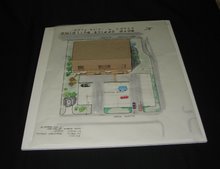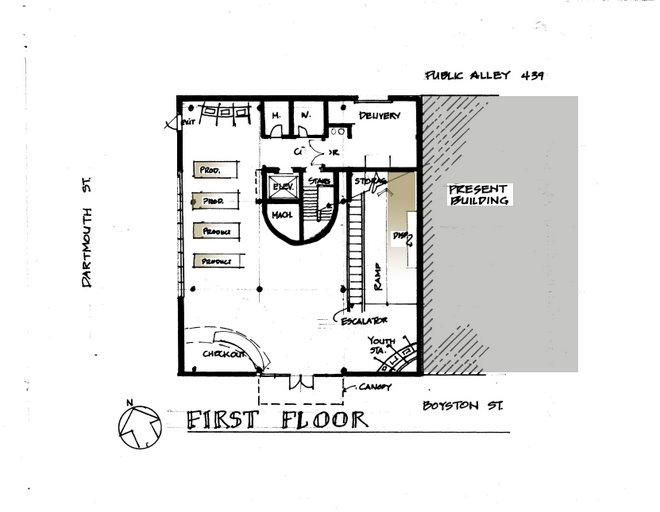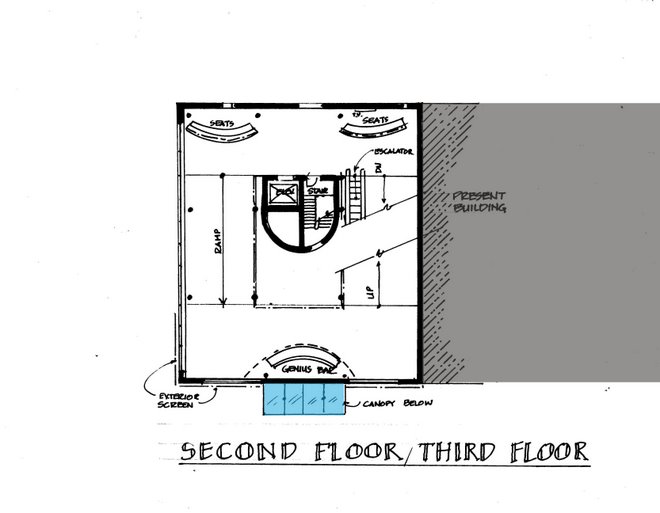
The image in the scene is one of very regular horizontal orientation and tension. With the convergence of the side walls to a point off of the room and the top of the room missing . Again the people in the scene bely the fundamental problem of a narrow room which is a cayon effect. We don't know if the if elements at one end and is a box with inconvenient planes. Bringing only two points together and creating the box edges does not provide the interest which planes of this juxtaposition could relaize if the proportions of those planes were arranged differently.
The only interst comes with the windows at the rear of the room and the colors of floor and wall. Form could be developed with more richness to make this space and the planes that form the boundaries. It would be nice to provide an non linear form which is non-linear to break the monotony of the pattern.






3 comments:
Your diagramming technique is fairly basic (i.e. selective outlining) and I am not sure if it the act of creating the diagram is actually affording you anything or if you are simply getting out of it what you are putting into it. If you are not learning anything by producing the diagram, then there is really no reason to produce that diagram.
What is interesting is your post-analysis commentary - i.e. suggesting how to improve the room. Which could, if you presented it as such, be your diagram. Diagram what is missing or what is needed or how you would alter what is there to make it better.
When you use the term "more richness" you need to be very clear and explicit as to the terms of reference/criticism - i.e. what is richness?
I really think you should create a "companion diagram" to each of these three where you infact "add" elements that you felt were missing or "alter" the existing perspective such that it becomes more "rich".
And make sure there are accompanying texts/explanations for each.
Post a Comment